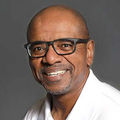Think of your grandmother. Your actual grandmother. Now think of the most fit or capable athlete you currently train. Should these two individuals perform the same workout? Of course not—at least not at first. The idea that they could actually perform the same workout is based on the belief that there are movements fundamental to the human experience.
The majority of adults have some issues. They have a bad ankle, a bad, knee, a bad back or a bad attitude. This is the typical client of a health and fitness professional, not the exception. And yet everyone needs appropriate levels of strength, mobility, agility and other fitness parameters to enjoy a high quality of life. If we start correctly and progress properly, almost anyone can make the journey from fragile to agile.
It is easy to make exercises harder, but it is hard to make them easy. It can be challenging to find the right entry point to exercise for someone who is deconditioned and/or presenting with numerous physical challenges. With a population skewing older (the Centers for Disease Control and Prevention estimates that by the year 2030, one in five people in the U.S. will be over age 65), successful health and fitness pros will be the ones who are adept at providing successful programming to this population.
Movement vs. Exercise
Is the squat a movement or an exercise? If we do one rep, we call it “sitting” (a movement). When we do multiple reps, we call it “squatting” (an exercise). The motion, however, is the same, rendering the squat both a movement and an exercise. As ACE Pro Chris McGrath says, “Movement is essential, exercise is optional.” Regardless of whether or not people exercise, they move, which makes movement quality the foundation.
We are faced with people who hire us to get in shape and lose weight, often after they have reached a boiling point of frustration with their current health status. They come to us with a bit of a fire in their bellies and want to work hard. And this is our challenge because improving the quality of a movement can rarely be done during a higher-intensity workout.
We have a responsibility to care for our clients’ bodies outside of the context of a workout, as well. When your clients know you care about how they feel during every minute of their day and that you care about the quality of their lives, they will more inclined to follow your recommendations. This is the essence of rapport, which is the foundation of the ACE Integrated Fitness TrainingTM (ACE IFTTM) model.
Case Study
Consider the following case study: A 62-year old woman who is retired and tasked with caring for her aging mother and occasionally her grandchildren comes to you because she needs strength to be able to move her adult mother in the bed and to lift and carry her grandchildren. She has high blood pressure (treated with medication), osteopenia, herniated and degenerated discs in her cervical spine, and left knee arthritis. She is not overweight and exercises regularly, but it’s mostly machine-based cardio and aerobics and Pilates classes.
Initial Program: Your client is already able to move a fairly significant weight because she’s occasionally moving her mother from the bed or picking up her grandchildren. However, external loads are light enough to correspond with phase 2, so she can focus on movement quality. (Note: Any load approximating things you would lift in everyday life are considered phase 2 exercises; phase 3 is reached when the load is heavy enough to create a strength response in the muscles). During the initial phase of her program, she will perform two sets of the following exercises, which include both phase 1 and phase 2, three to four days per week.
- Side-lying Stability Ball Stretch
- Wall Stands (for posture practice; back of head, shoulder blades, butt and heels on wall)
- Chin Tucks
- Hip Hinge
- Squat With Single-leg Balance (comfortable range-of-motion; hold medicine ball as hip counterweight)
- Straight-leg Deadlift With Light Dumbbells (facing wall and standing close to encourage backward movement of the hips)
- Glute Bridge to Single-leg Extension
- Dumbbell Row (no bench; staggered stance)
Progression (2 months): At this time, she will add a third set and increase the load to allow no more than eight reps (Note: This makes the exercises involving load phase 3 exercises.)
Progression (5 months): It’s time to introduce new exercises to her program:
- Dead Bug
- Step-back Lunge to Single-arm Dumbbell Press to Single-leg Stance (dumbbell in ipsilateral hand as the leg steps back and balances)
- Seated Cable Row
- Push-up on Ball
- Walking Lunge With High/Low Dumbbell Carry (one dumbbell at side, the other held at shoulder)
- Side Plank With Small Hip Lift
- Squat With Alternating Dumbbell Shoulder Press (hold a dumbbell in each hand at shoulders)
- Single-leg Glute Bridge
Progression (12 months): She will continue performing some phase 1 and 2 exercises at home and will add the following phase 3 and 4 exercises when working with you at the gym.
- Single-arm Cable Chest Press With Step-back Lunge (hold a single cable handle in ipsilateral hand from moving leg; perform press at top of lunge)
- Single-arm Cable Row With Step-back Lunge (hold a single cable handle in ipsilateral hand from moving leg; perform press at top of lunge)
- Opposite Arm and Leg Extension on Roller
- Barbell Stiff-leg Deadlift (underhand grip to focus more on posture at shoulders)
- Shuffle With Medicine Ball and BOSU Rebounder
- Overhead Medicine Ball Rainbow With Hop
- Squat With Medicine Ball Spinning Toss (develops forearm strength along with eye-hand coordination)
Notice that your client is now performing many athletic-style exercises. Although she does not play a sport, these movements are appropriate given her need to occasionally be on the move and bend down to pick up a grandchild.
Remember: It is easy to make exercises harder, but it is hard to make them easy. But once you do, the body responds by improving, which sets the stage for further progressions. This allows you to transform a client who feels fragile at the outset to one who is agile, capable and feeling better than ever.
Learn to effectively serve adults over 55 by incorporating modifications and training that prevents muscle deterioration, improves bone strength and boosts quality of life with ACE's Senior Fitness Specialist program.




 by
by 






 by
by